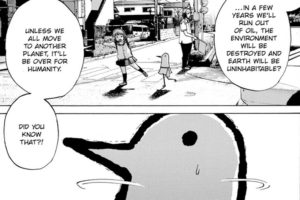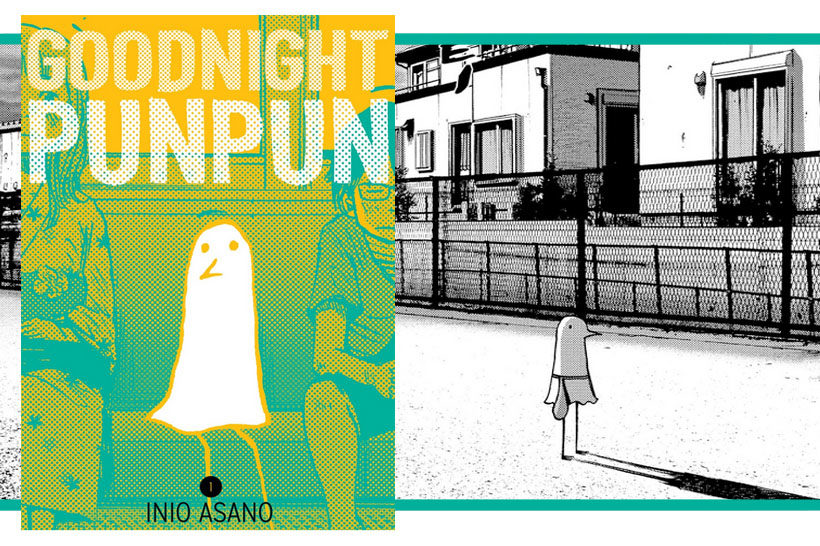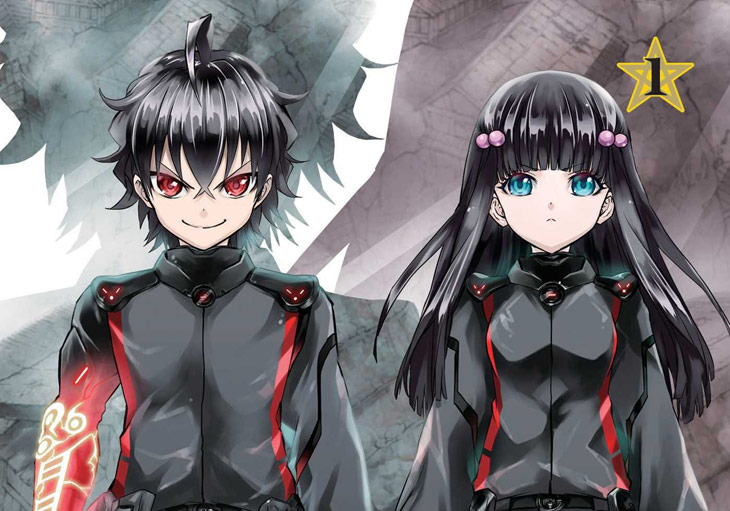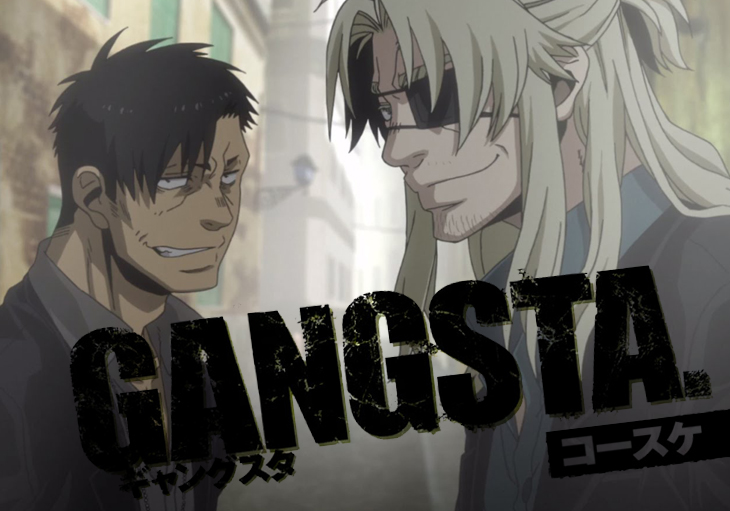Punpun Punyama is a shy eleven-year-old boy living in Japan. He’s interested in space, girls, and the super-secret porn watchers club he and his friends are in. The twist is that the author Inio Asano represents Punpun and his family as odd, simply drawn birds. However, this is merely a figurative representation for the reader, as the manga makes it oh so apparent that Punpun and his family are definitely human, capable of hope, love, disappointment, and brutality.
Goodnight Punpun appears to be a cutesy story about adolescence, but promptly shatters this perception by establishing an uncomfortable but intriguing tone from the first chapter. From page three onward we are treated to a girl bullying another child by shoving rocks into their mouth, and Punpun’s friends trying to explain the concept of sex as eloquently as they can based on their pre-teen perceptions. Punpun also meets the love of his life, Aiko, a transfer student who knows with certainty the earth will be uninhabitable once all the oil runs out. After some insight into Punpun’s hopes and dreams, and a quick conversation with God (who frankly seems disinterested in the marital problems of Punpun’s parents), the first chapter ends with domestic violence, and his mother is hospitalised.

It’s at this point that all pretence seems to shatter. Sure, the manga is primarily about childhood, but it shows Punpun and his friend as naive and unaware of the greater context of their actions and behaviour. At one point Punpun and several of his friends watch a pornography video tape, only to have the tape dubbed over by a man delivering his final message before intending to commit suicide. This, and the atmosphere Asano creates when the kids go to an abandoned miso factory to poke around, made my skin crawl. This makes for an unsettling reading experience at times, and I was glad when the book offered me a few genuinely funny moments to balance the scale.

Asano’s previous manga, Solanin is one of my favourites. It is very similar to Punpun, not just in art style, but in theme and in its incorporation of tragedies big and small. Both stories also focus on young people who are trying to find themselves and understand their position in the world amid moments of happiness and despair. But unlike Solanin, the first volume of Goodnight Punpun is missing a positive payoff. Perhaps this is what Asano was aiming for, a series that doesn’t attempt to offer empty assurances. This is all well and good of course, but I wonder if that will leave the reader with anything but a semi uncomfortable experience and a bitter taste in their mouth upon finishing the first volume.
Asano’s art style also suits the story extremely well. He mixes the cartoonish Punyama family with photo realistic backgrounds and human characters that look real because the way their faces are drawn is sometimes exaggerated in gross ways. For example, the book is filled with child characters and they are often drawn with their eyes bugging out or their mouths stretched wide to extremes. It suits the style of the story, realistic but also a little uncanny. In addition, Punpun never feels jarring, he looks like a bird covered in a bed sheet, but he contrasts well with other characters and the environment.

Despite the outwards appearance of the book and Punpun’s cutesy bird design, Goodnight Punpun is a story filled with gritty realism coated in surrealism. It’s a look at childhood through a darker lens and a portrayal of the different ways people can be forced to grow up. The Goodnight Punpun series is the first part of a lengthy coming of age story, and it’s not one that I would readily recommend to just anyone. I can stand a certain amount of grittiness and pain, and I enjoy many stories that contain these things. But I think whether a person would enjoy this series is based solely on whether they aren’t put off by the first chapter. Despite that lacklustre recommendation, I think the sum of Goodnight Punpun’s parts make it worthy of a read if the prospect of violence and sexual themes doesn’t diminish your curiosity.





